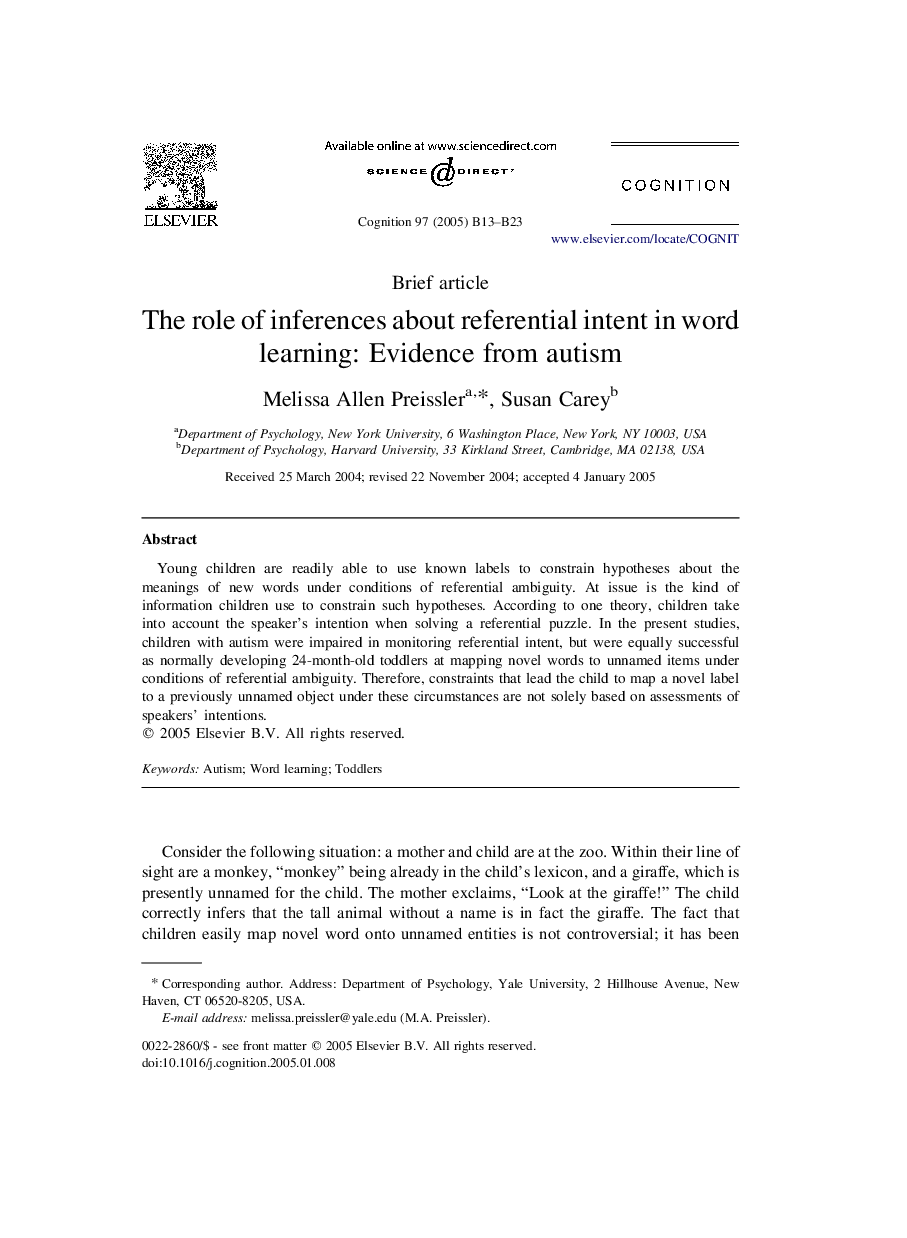| Article ID | Journal | Published Year | Pages | File Type |
|---|---|---|---|---|
| 10458121 | Cognition | 2005 | 11 Pages |
Abstract
Young children are readily able to use known labels to constrain hypotheses about the meanings of new words under conditions of referential ambiguity. At issue is the kind of information children use to constrain such hypotheses. According to one theory, children take into account the speaker's intention when solving a referential puzzle. In the present studies, children with autism were impaired in monitoring referential intent, but were equally successful as normally developing 24-month-old toddlers at mapping novel words to unnamed items under conditions of referential ambiguity. Therefore, constraints that lead the child to map a novel label to a previously unnamed object under these circumstances are not solely based on assessments of speakers' intentions.
Keywords
Related Topics
Life Sciences
Neuroscience
Cognitive Neuroscience
Authors
Melissa Allen Preissler, Susan Carey,
